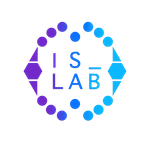K. Kravari, N. Bassiliades, H. Boley, “Cross-Community Interoperation Between Knowledge-Based Multi-Agent Systems: A Study on EMERALD and Rule Responder”, Journal of Expert Systems With Applications, Elsevier, 39 (10), pp. 9571-9587, 2012.
Author(s): K. Kravari, Nick Bassiliades, H. Boley
Appeared In: Journal of Expert Systems With Applications, Elsevier, 39 (10), pp. 9571-9587, 2012.
Keywords: Semantic Web, RuleResponder, Intelligent multi-agent systems, EMERALD, Cross-Community Collaboration.
Tags:
Abstract: The ultimate vision of the Semantic Web (SW) is to provide users with the capability of delegating complex tasks to intelligent agents. The latter, acting in an interoperable and information-rich Web environment, will efficiently satisfy their users’ requests in a variety of real-life applications. Much work has been done on SW information agents for Web-based query answering; a variety of multi-agent platforms and Web language standards has been proposed. However, the platform- and language-bridging interoperation across multi-agent systems has been neglected so far, although it will be vital for large-scale agent deployment and wide-spread adoption of agent technology by human users. This article defines the space of possible interoperation methods for heterogeneous multi-agent systems based on the communication type, namely symmetric or asymmetric, and the MASs status, namely open or closed systems. It presents how heterogeneous multi-agent systems can use one of these methods to interoperate and, eventually, automate collaboration across communities. The method is exemplified with two SW-enabled multi-agent systems, EMERALD and RuleResponder, which assist communities of users based on declarative SW and multi-agent standards such as RDF, OWL, RuleML, and FIPA. This interoperation employs a declarative, knowledge-based approach, which enables information agents to make smart and consistent decisions, relying on high-quality facts and rules. Multi-step interaction use cases between agents from both communities are presented, demonstrating the added value of interoperation.
